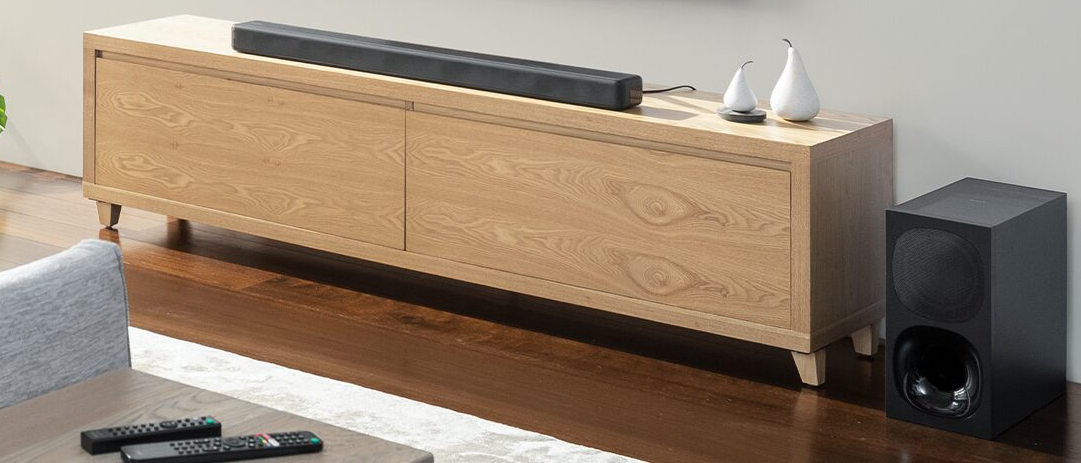TechRadar Verdict
Sony’s 3.1-channel soundbar delivers TV and movie sound respectably, and music averagely. It’s not class-leading at the price, and the claims for delivering virtual height and surround are overstated, but it’s a nice little soundbar that will perfectly complement Sony TVs in particular.
Pros
- +
Compact Atmos/DTS:X bar
- +
Immersive AE for lesser signals
- +
Bluetooth for TV and music
Cons
- -
No dedicated height/surround drivers
- -
Height/surround claims overstated
Why you can trust TechRadar
The Sony HT-G700 leads its features on delivering “cinematic surround sound” from a 3.1-channel Dolby Atmos/DTS:X soundbar and wireless subwoofer.
Physically, those three channels face forward and have nothing to do with surround nor the height channels usually associated with the audio formats of Dolby Atmos and DTS:X.
Instead of adding extra drivers for those channels, the Sony bar aims to deliver both traditional and vertical surround via the magic of audio processing. This is a rarely successful strategy. But if anyone can, perhaps Sony can.
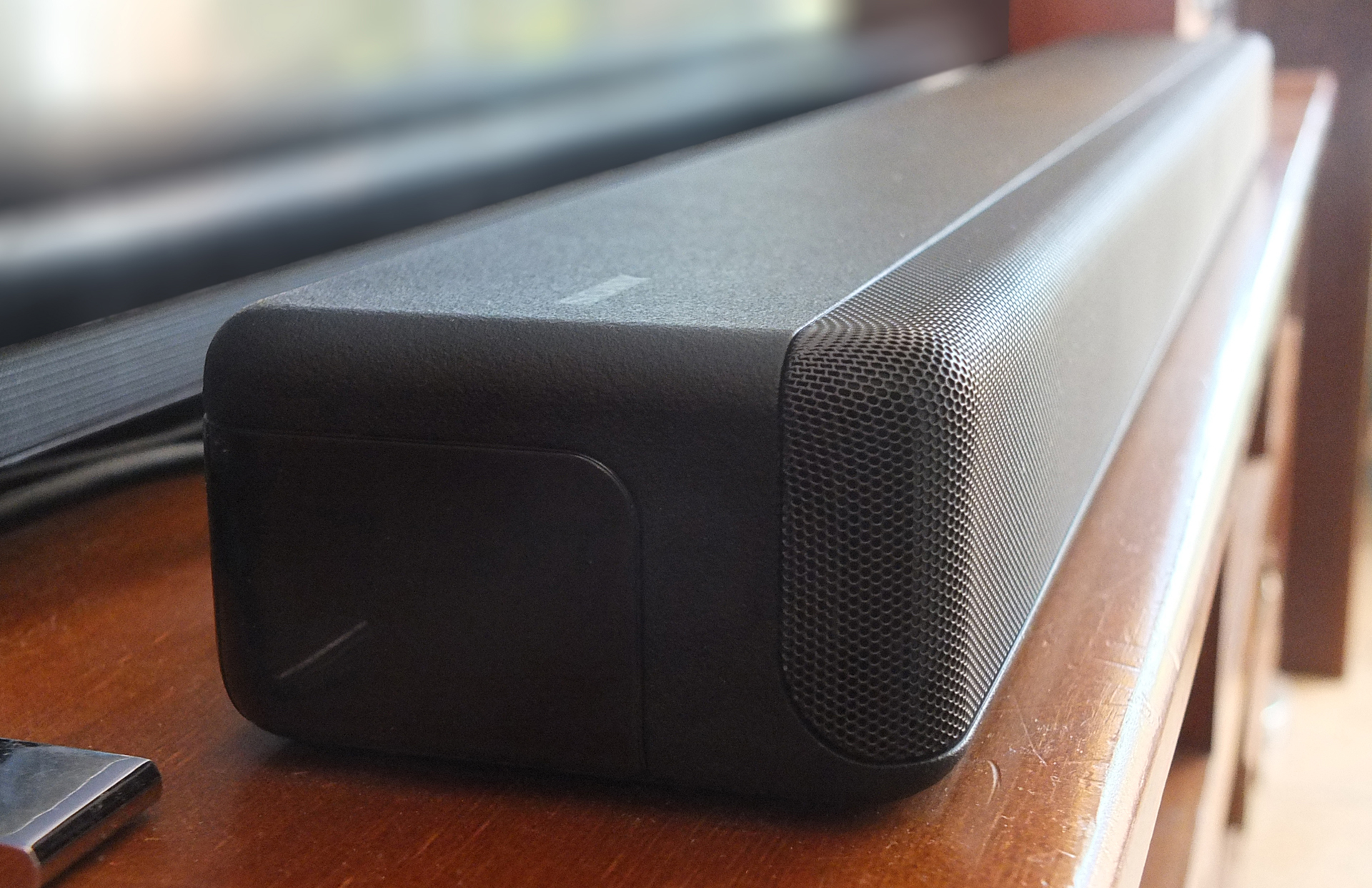
Sony HT-G700 price and availability
You'll be able to pickup the Sony HT-G700 for $600 in the US, £450 in the UK, and AU$900 in Australia, and it's available in all regions right now.
Design and features
Sony’s soundbar is quietly stylish: 98cm long, with a matte grey top surface and a front metal front grille punched through with a host of holes – our estimate: 52,684. Soundbars should be visually unobtrusive, while audibly obtrusive: ear-friendliness is essential, eye-friendliness secondary, and Sony ticks those boxes here.
The bar’s height of 6.4cm will keep it clear of all but the most low-slung of today’s TVs, and it has a laudable collection of IR passthrough transmitters on the rear, so even it does block your TV’s infrared receiver, it will relay remote commands through (this requires activation in the settings menus). This passthrough facility is not unknown in competitors, but should be far more common than it is.
The soundbar is accompanied in its chair-shaped packaging by a wireless subwoofer, usefully labelled with a sticker saying ‘Wireless Subwoofer’. This is a tall slim unit – 38.7cm high, 19.2cm wide, its depth of 40.6cm being its longest dimension.
Sign up for breaking news, reviews, opinion, top tech deals, and more.
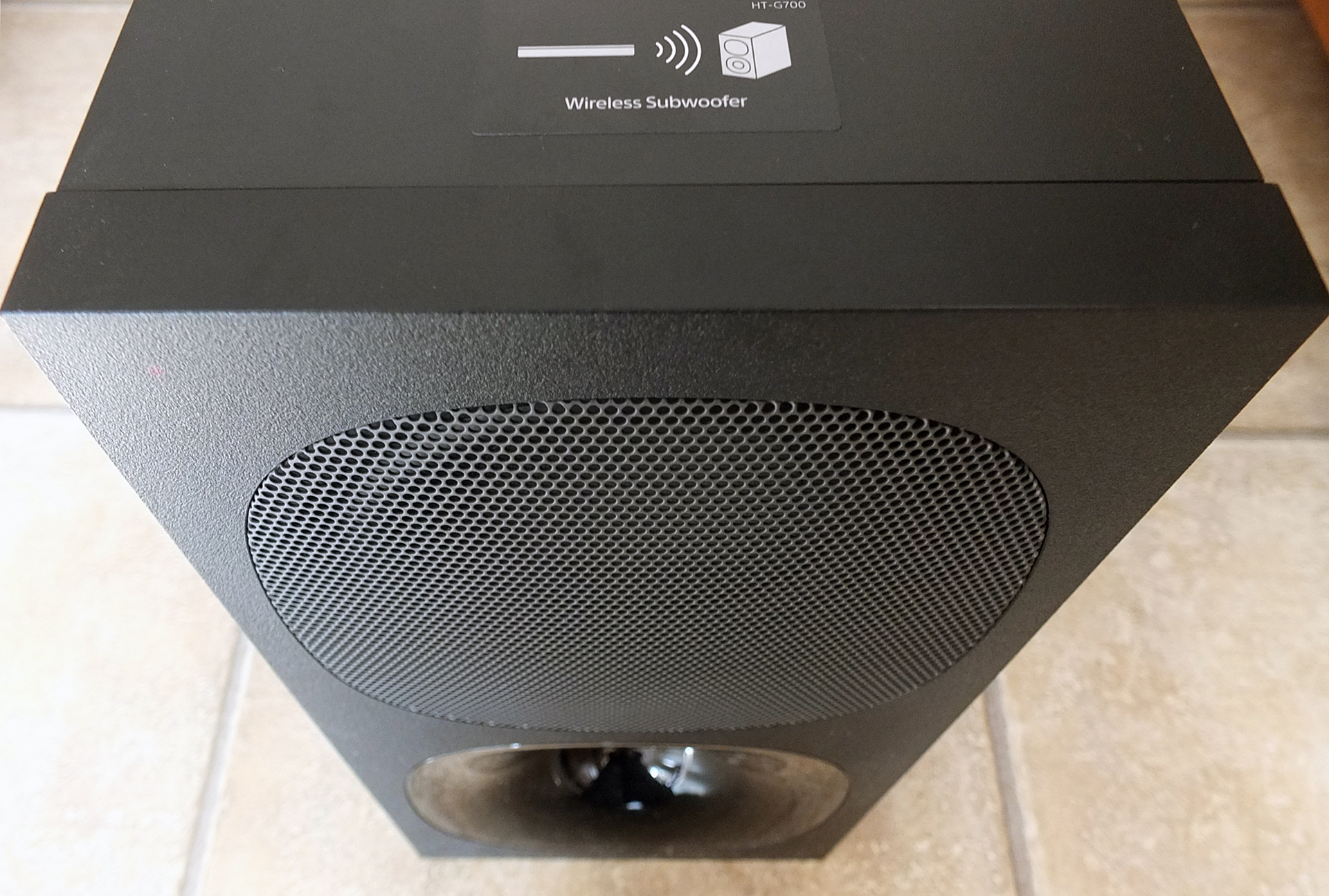
It both fires and ports to the front, so can be usefully located anywhere, even enclosed on all other sides, and there’s nothing to stop you flipping it flat either. It has a single 16cm bass cone, weighs 7.5kg and claims 100W of power inside.
There are only two buttons to the rear: power and ‘Link’, chances being that you won’t need either, since the sub arrives paired with the bar, and turns on as soon as it receives a signal.
It did fail to kick in on three occasions during our testing, but a restart of the system was able to awaken it from slumber. That aside, your main task will be getting the subwoofer in the right place for its bass to complement the soundbar’s higher frequencies.
For these the bar has a set of three full-range drivers, each an oval of 45mm x 100mm. There are no separate tweeters. Nor are there any ports on the bar; this is a sealed box, which is a less efficient arrangement than a ported enclosure in terms of power required.
This may explain why Sony quotes a stupendous 100W of power to each driver, though it provides no measurement criteria for this figure. When quoted at 1kHz with a maximum of 1% THD distortion, the figure drops to 60W per channel.
Connections
Pluggery resides in two bays at the rear of the bar, with one bay for the power cable, the second hosting an optical digital audio input and two HDMI sockets: one inward for connecting an external source, one outward to your TV.

This outward HDMI connection may, however, provide a key inward source of audio, since it supports both the Audio Return Channel of HDMI ARC and the enhanced Audio Return Channel of eARC.
If your TV is so equipped, you can play from streaming channels such as Netflix and Disney+ which provide Atmos soundtracks and these can travel to the soundbar down the HDMI cable, no other connections required.
If your TV lacks even the original ARC, you can use an optical cable from TV to soundbar, but whether this can deliver surround will depend on how your TV handles audio.
The Sony bar is capable of receiving up to Dolby Digital and DTS-ES via this input (not Atmos and DTS:X, nor TrueHD and DTS-HD), but many TVs will only deliver stereo anyway. It can also receive TV sound (in stereo only) via Bluetooth from compatible Sony TVs.
Where some soundbars network and have streaming abilities, the Sony lacks the former, so offers Bluetooth for the latter. The Bluetooth spec has AAC to lift the quality of streaming for Apple device owners, but perhaps surprisingly neither aptX nor Sony’s own LDAC Bluetooth codec to benefit users of Android devices, including Sony’s own.
To assist your connections an HDMI cable is included in the box, as are printed versions of both the quick start guide and full manual (for which thanks: too often the latter is available only online), and a well-designed remote control with large central volume rocker and separate buttons for subwoofer level. Most of the rest of the remote buttons govern access to sound processing options. A lot of them.
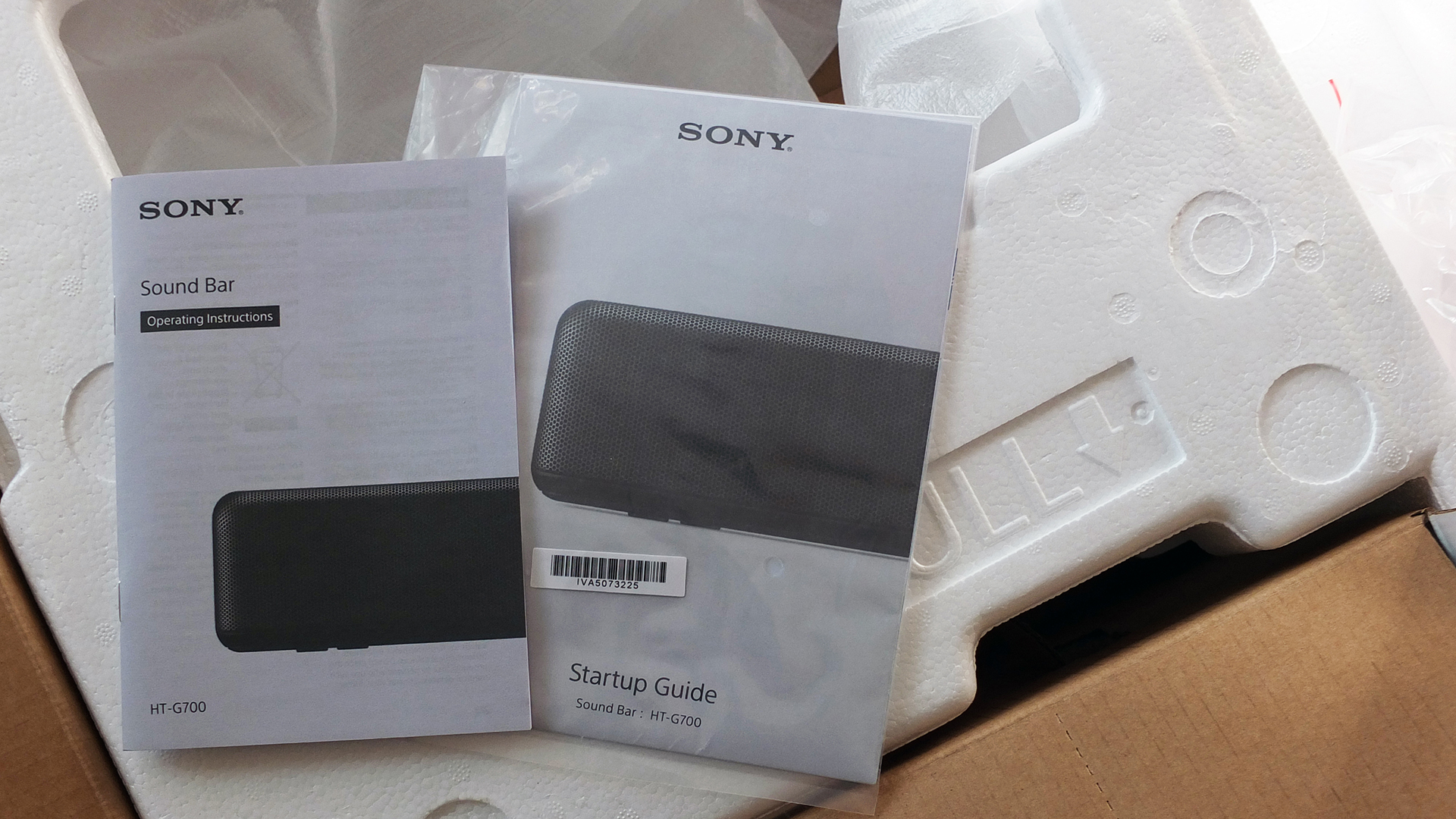
- Best TVs available today
Atmos, DTS:X and Immersive AE
One key area the Sony outdoes a great many rivals is its acceptance of a wide range of audio formats via HDMI in and HDMI eARC. These cover the gamut from Dolby Digital through Dolby TrueHD to full-blown Dolby Atmos, and from basic DTS through DTS HD Master Audio to DTS:X.
The two of those formats which can include height information are Dolby Atmos and DTS:X. But just because equipment accepts Atmos and DTS:X doesn’t mean it delivers height...
These object-based surround technologies are scalable to any size of system – up to 24.1.10 in the case of Atmos consumer systems, should you be lucky enough to have an expansive home cinema room capable of holding 34 speakers. But in the other direction it can also scale to lesser systems, right down to mono!
So when it says Dolby Atmos or DTS:X on the box, that just means the unit can read and interpret a Dolby Atmos or DTS:X data stream – it doesn’t necessarily mean you’re getting any height channels.
Here, as noted, Sony has catered for them in a 3.1-channel system – so its physical channels deliver just the front left, right and centre channels, plus the subwoofer. There’s no genuine surround at all, and no speakers dedicated to delivering height information. Yet Sony nevertheless boasts of delivering 7.1.2 – that’s three front, two side, two surround and two ceiling channels.
“Hear sound from all directions,” says its website. “Hit the Immersive AE (Audio Enhancement) button and the HT-G700 can upscale even regular stereo audio to 7.1.2 surround sound – so every TV show and movie gets the surround sound treatment.”
Immersive AE combines two Sony technologies in one: ‘S-Force Pro Front Surround’, which aims to emulate virtual surround speakers behind you, and the ‘Vertical Surround Engine’, which the manual describes as “a highly precise digital sound field processing technology that produces the sound field in the height direction virtually in addition to a sound field in the horizontal direction”.
These are what Sony is using to deliver Dolby Atmos or DTS:X from just three speakers, and for an Atmos or DTS:X content source, they’ll do so automatically; no user intervention is required. For all other content (stereo sound or above) users can choose whether to activate the Immersive AE on the remote to artificially generate a more immersive surround sound experience.
But there’s more, because under a fairly deep settings menu (Menu/Audio/Effects) you can select one of three options, each of which disables the others.
First is ‘Dolby Speaker Virtualizer’, which invokes Dolby’s own technology to create a surround effect for stereo or 5.1 Dolby surround signals – but not Atmos, says Sony Australia. This setting also disables both DTS:X sound effects and Sony’s own Immersive AE.
Second option is DTS Virtual X, which will virtualize DTS soundtracks but again, not DTS:X, which ‘just works’. Again this setting “disables sound effects for the Dolby format” and Immersive AE.
The third option, ‘Sound Mode On’, engages Sony’s Immersive AE, which can then be applied to other formats. Only when this option is engaged can you use the ‘Auto Sound Mode’ button on the remote control, which decides on the most suitable processing from the otherwise user-selectable options of ‘Standard’, ‘Music’ and ‘Cinema’.
Indeed if you’ve selected the Dolby or DTS modes, stay away from all these remote buttons, as they instantly disengage your choice and throw you back to ‘Sound Mode On’.
So that all makes pseudo-surround functionality rather more complicated than you might hope. Before watching any movie, you’ll need to check the sound format, head into settings, and pick the right ‘Effects’ option.
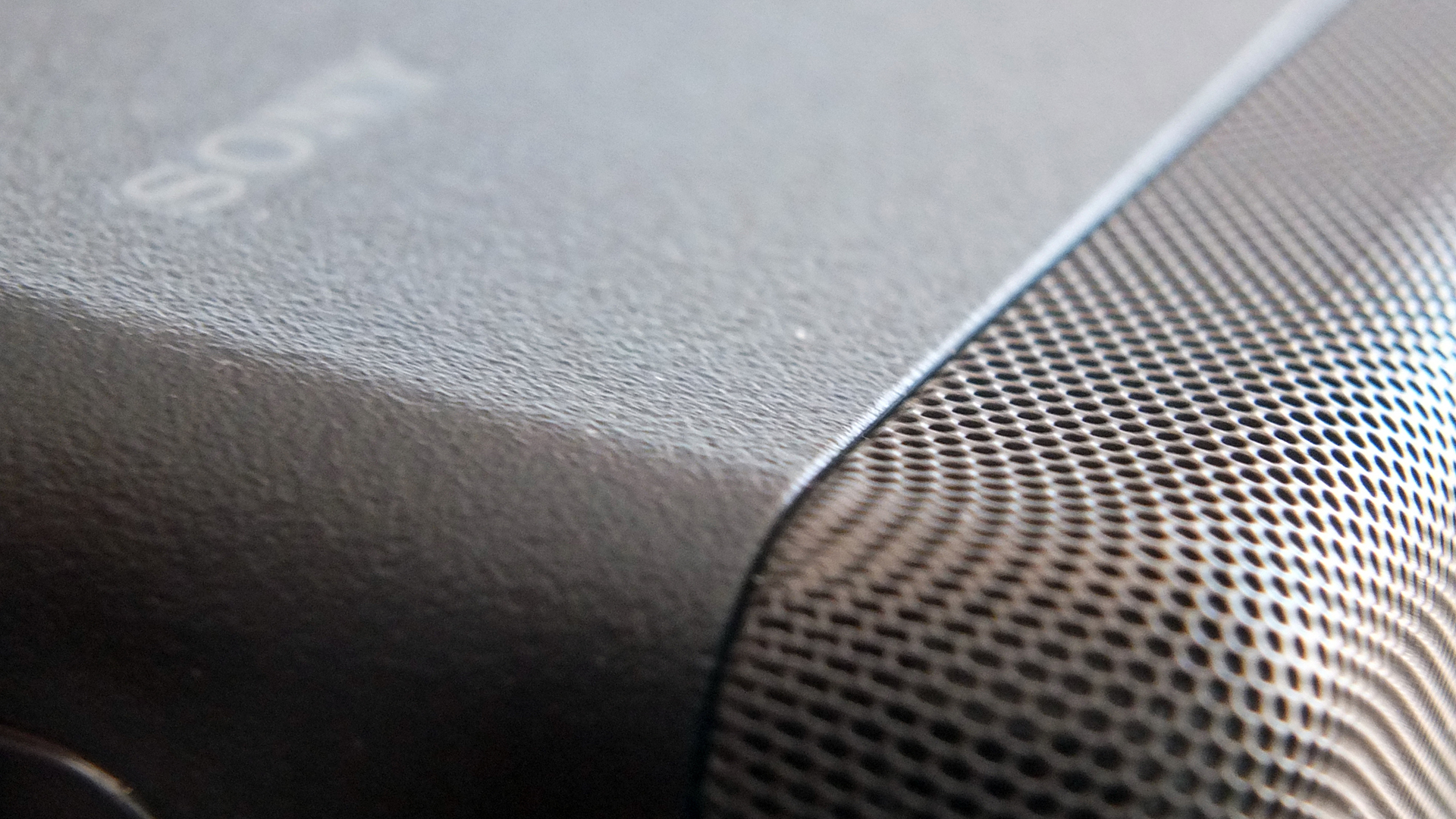
Movie performance
Such studious sound selection is just about worth doing, because the Dolby setting under ‘Effects’ delivered the cleanest and most accurate delivery of an expansive sound field under nearly all circumstances, including when the bar was receiving Dolby Atmos content.
We very nearly believed that the sycamore seed in the Dolby Leaf demo went behind our head, the only setting when this occurred. This setting also delivered a significantly tighter bass component from the subwoofer.
But disengaging the Dolby effects mode and switching to Immersive AE also delivered an expansive and enjoyable field that pushed further in terms of width beyond the bar itself. Vertical sound? Not to our ears. But we’ll give it ‘engaging’ and ‘exciting’, along with the versatility of the ‘Standard’, ‘Music’ and ‘Cinema’ modes.
Test tracks are one thing; real content another. Pixar’s ‘Onward’ streams in Dolby Atmos from Disney+: the HT-G700 kept dialogue perfectly clear without any need for its dialogue enhancement settings.
Again the Dolby setting was cleanest, but the Immersive AE added width, so that the cavernous echo around voices prior to the gelatinous cube sequence was more expansive, the action effects and music more cinematic, though when switching to Immersive AE we also had to notch the subwoofer down a few stops to stop it dominating. If the vocal clarity suffers, the ‘Standard’ sound mode tightens things up.
Music performance
Under that deep Effects menu there is also an ‘off’ setting, which turns everything off. This sounded rather dull for movie content after the expansion of Immersive AE, but it’s handy for bringing music back to purity, further than is achieved by the ‘Music’ button on the remote, which takes the centre speaker out of play for stereo music.
‘Standard’ puts it back again: a bigger but messier sound. Immersive AE makes rather a mess of stereo music – you can hear the disorientating effects of whatever phase trickery the system employs, with treble elements getting spitty and phasey.
At its unprocessed best the Sony is a little above average with music for a soundbar, but it never gets to the heart of music, lacking in particular the treble clarity to open up a soundstage. We found it a little tiring for music over long periods.
Final verdict
So this is an enjoyable, sound-widening bar and subwoofer pair for movies and TV, if not our first pick for music. The promise of vertical and surround effects are simply overstated.
While we accept the possibilities of wall-bouncing surround created by separate drivers (which has reached its apogee in Sennheiser’s rather pricier AMBEO soundbar), that isn’t how Sony’s Immersive AE works; the drivers face forwards and the manual notes that it “is hardly affected by the shape of a room because it does not use the sound reflected from a wall”.
Instead it goes the sound processing path, and such pseudo-surround from front speakers is invariably either ineffective or so destructive to clarity as to be unusable. This Sony bar does nothing to change our view on that.
Why make such claims? Perhaps because otherwise they would have to admit this is a well-built but otherwise simple 3.1-channel soundbar which delivers TV and movie sound respectably, music averagely, surround and height channels not at all.
That’s not to dismiss the HT-G700. It performed very competently with TV and movie sound alike; it’s not class-leading at the price but it’s a nice little soundbar that will perfectly complement Sony TVs in particular.
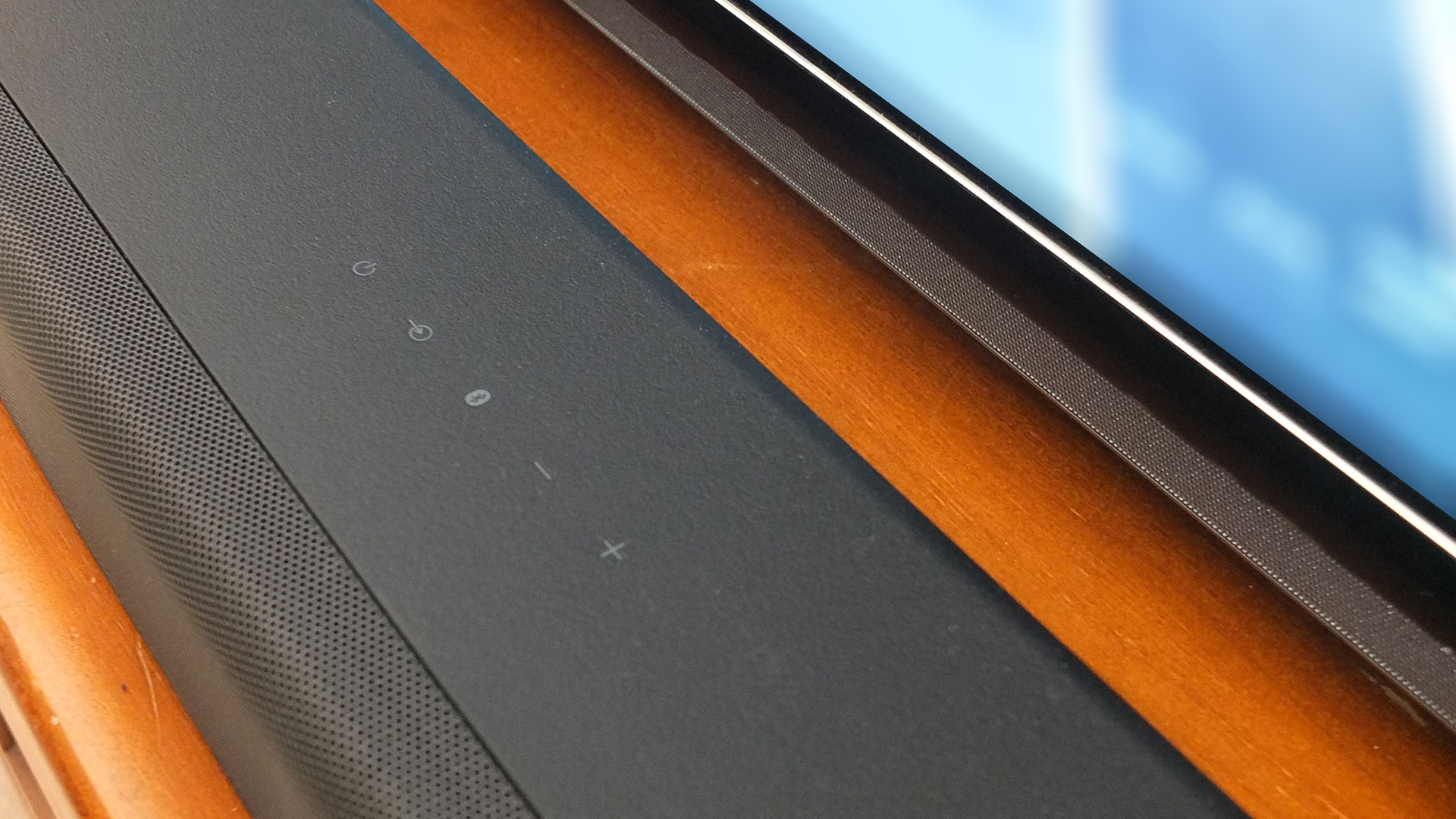
Buy it if...
You have a compatible Sony TV
Certain features are only available via compatible Sony TVs, such as receiving a stereo Bluetooth signal. So, for those that are already invested in a Sony home theatre setup, you'll be able to unlock this soundbar's full potential.
You want to improve your TV sound
There's no doubt that the sound produced by the HT-G700 will outshine the stock audio from your TV, and while you can spend tens of thousands on this privilege, this particular bar does so at a much more affordable price point.
You like to tweak subwoofer levels
With an included wireless subwoofer that only has ports firing in a single direction, you don't need to worry too much about its placement. For those that like to tweak their sub frequencies on the fly, the remote has a dedicated subwoofer volume level.
Don't buy it if...
You want real surround sound or height
As we covered thoroughly in the review, Sony's claims for surround sound and height in its audio reproduction are a little misleading. All of this is done in various algorithmic ways as the soundbar itself only has three speakers and doesn't use any wall-bouncing or other placement-sensitive technology.
You intend to play a lot of music
While it's certainly a decent enough performer for TV and movie audio, we didn't find the HT-G700 to be compelling when just listening to music, in part due to some of the pseudo-surround modes creating strange phasing issues with the sound.
- We've checked out all the best soundbars available today

Jez Ford is the editor of Australian audiovisual periodical Sound+Image magazine.
